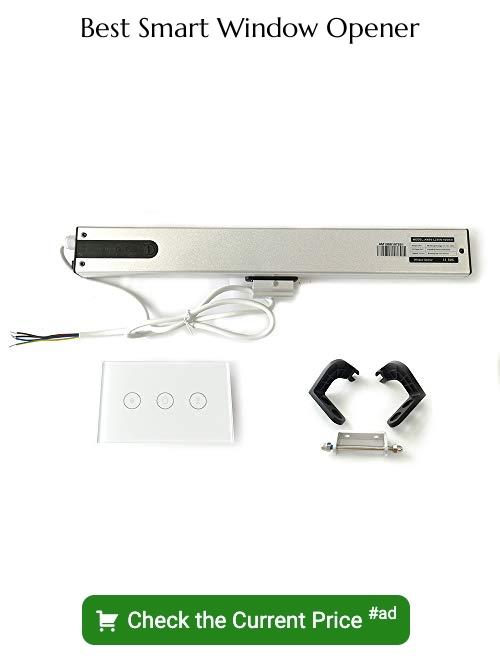A window opening control device is a safety feature installed on windows to limit the extent they can open, thus preventing accidents like falls.
Window Opening Control Devices (WOCDs) are essential safety features designed to prevent accidental falls from windows, particularly important in homes with children.
These devices limit the window opening to less than 4 inches, but can be disengaged by an adult for full window operation.
In this article, you’ll find comprehensive information on the types of WOCDs, how they work, installation guidelines, and how to choose the best fit for your home.
Dive in to ensure your windows are not just sources of light and fresh air, but also safe for all inhabitants.
Key takeaways:
- WOCDs restrict window opening to prevent falls, especially for kids.
- WOCDs have a release function allowing full window operation.
- WOCDs are easy to use, especially for windows in children’s rooms.
- Leading window brands like Andersen, Marvin, and Pella include WOCDs.
- WOCDs must meet regulations for safety and functionality.
Understanding a Window Opening Control Device (WOCD)

A Window Opening Control Device (WOCD) operates by limiting the opening of a window at a predetermined width, with an option to release the control and open the window fully when required. Primarily designed for child safety, it works in a way to mitigate accidental falls, especially when located at a particular height.
Normally, WOCDs restrict the window opening to less than four inches, in line with child-safety guidelines.
To break down the key ideas:
- Restriction: WOCDs limit the window’s opening width to ensure safety, usually no more than 4 inches initially.
- Control: They offer the user an easy way to control how much the window opens.
- Release function: If more ventilation is required, a simple release mechanism allows the window to open fully.
- Prevention of Accidental Falls: By controlling the extent to which the window can open, these devices prevent children from accidentally falling out of windows.
- Usability: They are user-friendly and require minimal effort to operate.
- Positioning: Often they are recommended for windows located at a height or in children’s rooms.
Making the most of a WOCD requires an understanding of these fundamental features, how they contribute to the overall functionality of the window and ultimately, enhance home safety.
Functionality of a Window Opening Control Device
A Window Opening Control Device, often referred to as WOCD, is ingeniously designed to restrict the window’s opening to no more than four inches. It operates based on a mechanism that can automatically reset, allowing normal window function when required.
Here are a few key ideas about the functionality of a WOCD:
- Automatic Resetting: One of the defining traits of a WOCD is its ability to automatically reset. It means once a window equipped with WOCD is closed, the device resets to its safety position limiting the opening to four inches.
- Improvement of Safety Standards: By restricting the window’s opening, the WOCD makes the window safer, particularly for high-risk groups such as children and pets. It minimizes the risk of accidents by preventing them from climbing out.
- Simple to Override: In an emergency situation, the WOCD’s limitation can be easily overridden by an adult. This ensures that escape routes aren’t blocked if necessary, making it equally practical as a safety device.
- User-friendly Interface: The simplicity of a WOCD lies in its user-friendly interface. Most WOCDs are designed for easy use and do not require technical expertise to reset or override the device.
- Versatile Installation: A WOCD can be installed on different types of windows – be it a double-hung window, sliding window, or casement window. Keep in mind that the installation process may vary depending on the type and model of the window.
Do remember, the primary function of a WOCD is not to replace adequate supervision but provide an extra layer of protection where necessary. It should be just one component of your comprehensive home safety strategy.
Importance of a Window Opening Control Device in Window Safety

A window opening control device plays a significant role in enhancing security in homes, offices, and public facilities. First, it prevents unauthorized entry, particularly when windows are located in areas easily accessible from outside. By limiting the window opening to a 4-inch maximum, it makes it difficult for potential intruders to gain entry.
Second, it is a critical child safety feature. It lessens the chances of children climbing or falling through open windows. Therefore, while enjoying fresh air, parents can remain confident of their children’s safety around windows.
Lastly, installing such a device means compliance with safety regulations. Most local building codes and regulations necessitate including safety measures like window opening control devices in properties.
Remember to consider the window location, access, and type while installing a window opening control device, to ensure maximum effectiveness. Regular checks and maintenance are also key to ensure it continues to function as intended.
Installation Process of a Window Opening Control Device

Begin by selecting the optimal position where the device should be installed – usually near the top sash. Clean the area thoroughly to ensure optimal bonding.
The next step is to tightly adhere the base unit of the WOCD onto the window frame using the adhesive backing. A tip to ensure stronger adhesion is to apply some amount of direct pressure on the base unit after sticking it to the window frame.
Now, connect the arm unit to the base unit as per the manufacturer’s instructions. Most WOCDs are designed to snap together effortlessly in a step that’s frequently termed ‘attaching the inhibiting arm’.
Once the units are connected, test the functionality to ensure the window won’t open more than 4 inches. If the window opens more than this, adjust the arm appropriately to limit the opening. But remember, a correctly installed WOCD should also allow for full opening if necessary.
Lastly, recheck the installation after a few hours of use. Some prefer to inspect it again after 24 hours to confirm the window opening control device is secure and functioning efficiently. Routine checks and maintenance help maintain the device’s efficacy and longevity.
These steps will vary slightly depending on the window model and the specific device you’ve purchased. Always refer to the manufacturer’s installation guide for specific guidance.
Availability of Window Opening Control Devices in Major Window Brands

Major window brands understand the importance of window safety and have readily equipped their products with Window Opening Control Devices (WOCDs). Leading the pack is the well-respected Andersen Windows whose innovation in WOCDs is notable. The devices come inbuilt with their window products, ensuring optimal security from the point of purchase.
Similar attention to safety is seen in Marvin windows, offering a range of window lines all designed with WOCDs. Their devices go a step further, incorporating aesthetic blending, thus allowing homeowners to achieve safety without interfering with the home’s visual appeal.
Pella, a window brand synonymous with innovation, is also part of this safety-focused community. Pella windows come standard with integrated WOCDs across their product lines. They consistently update their WOCD design to align safety with ease of use.
Keep in mind, your local window installation professionals are typically well-versed in these brands and can provide further information on each product line’s safety devices, allowing you to make an informed decision when purchasing new windows.
Regulations and Standards Concerning Window Opening Control Devices

To maintain the integrity of operational safety, Window Opening Control Devices (WOCDs) are subjected to rigorous regulations and standards.
Firstly, a term frequently encountered is the ‘4-inch rule’ from the American Society for Testing and Materials (ASTM). According to the ASTM’s safety specification F2090, WOCDs should prohibit windows from opening more than 4 inches, which serves to prevent children from accidentally falling.
Secondly, the system must be configured so that it requires a dual action, challenging for a child to unlock. This includes the requirement that the device’s release mechanism should not be operable by a child under six years of age and should strive to prevent accidental disengagement.
Thirdly, in the event of an emergency, the WOCD must be quickly and easily disengageable. This obligatory safety feature, also acknowledged by the International Residential Code (IRC), enables an unrestricted opening of the window for a safe exit if required.
Lastly, post-installation of the WOCD, particular attention should be given to the manufacturer’s maintenance instructions. Complying with these instructions ensures the device’s long-lasting functionality and adherence to safety standards.
Please remember to adhere to these regulations for safe and optimal use of your window opening control devices.
Maintenance and Care Tips for a Window Opening Control Device

Regular monitoring and prompt rectification of any potential issues can ensure a long lifespan for your WOCD. Follow these tips:
Clean the device regularly to prevent the buildup of dust or debris that could affect its operation. A gentle wipe with a soft cloth should suffice.
Conduct a monthly functionality check to ensure that the device permits the window to open and close properly.
Avoid using sharp objects or excessive force when operating the device as these can cause damage.
Lubricate the device occasionally, using a silicone-based product for smooth operation. Be careful not to oversaturate it, to prevent residue build-up.
If the device shows signs of wear or difficulty operating, consult a window repair professional or replace the unit promptly to maintain safety standards.
Never attempt to bypass or disable the device, as it is a crucial safety mechanism, particularly in homes with children or pets, or in dwelling units not located on the ground floor.
FAQ
What does WOCD stand for in Windows?
WOCD in the context of windows stands for Window Opening Control Device.
What is a window fall prevention device?
A window fall prevention device is a safety tool, often metal-based, designed to prevent children from climbing out or accidentally falling through an open window.
How does a window opening control device function?
A window opening control device functions by restricting the window opening to less than four inches unless overridden, preventing accidental falls while still allowing ventilation.
Are there varying types of window fall prevention devices for different window models?
Yes, there are varying types of window fall prevention devices such as window guards, window stops, window wedge, and window opening control devices, each giving a respective fit and protection level for different window models.
What regulations exist for the usage and installation of window opening control devices?
According to the American Architectural Manufacturers Association, window Opening Control Devices must limit the window opening to less than 4 inches, and should be able to withstand a force of 75 pounds when applied perpendicular to the window to comply with ASTM F2090.
Related Stories
- Installing Window Air Conditioner in Aluminum Window Frame: Step-by-Step Guide
- How Far Past Window Should Curtain Rod Go: A Comprehensive Guide to Curtain Rod Placement and Installation
- 15 Repair Aluminum Window Ideas to Enhance Your Home
- Guide to Standard RV Window Sizes for Efficient Replacement
- How to Remove Aluminum Window Frame: Step-by-Step Process
Recap

